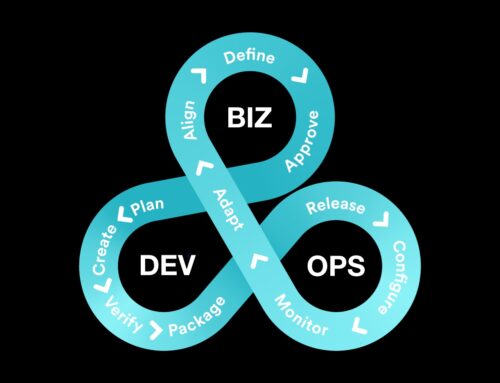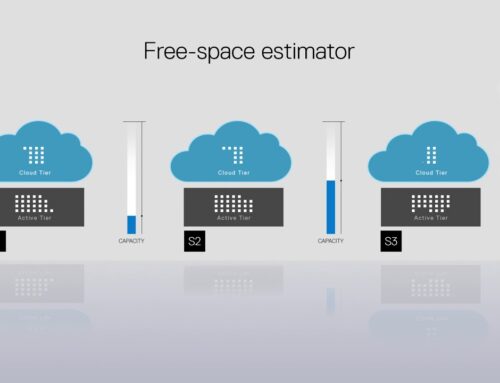Cloud computing has the potential to significantly impact data privacy and security, both positively and negatively.
Cloud service providers invest heavily in security measures, such as firewalls, encryption, and intrusion detection systems, to protect the data stored in their cloud environments. They typically provide automatic data backups, which can help organizations recover from data loss or corruption. This can provide a higher level of data protection than organizations can achieve on their own.
By default, cloud service providers are often better equipped to provide robust security and privacy controls than individual organizations. On the other hand, the use of cloud computing can also increase the risk of data breaches and privacy violations.
The only reason businesses are migrating to the cloud is so they can focus on their core operations without having to worry about the security and reliability of their IT infrastructure.
However, the migration of sensitive data to the cloud also raises new privacy and security concerns. For example, businesses must ensure that they have a clear understanding of where their data is stored and who has access to it. They must also ensure that their data is protected against unauthorized access, theft, and breaches. This requires businesses to implement strong security controls and comply with relevant privacy regulations, such as the General Data Protection Regulation (GDPR) in Europe.
Moreover, businesses must also consider the risk of vendor lock-in when moving to the cloud. This means that they may become dependent on a single cloud provider, which can limit their ability to switch to a different provider if they are dissatisfied with the service they receive. This can also raise concerns about data ownership and control, as businesses may be unable to access their data if they decide to switch to a different provider.
Potential challenges of cloud computing for data privacy and security
Data breaches: The use of cloud computing can increase the risk of data breaches, as data is stored outside of the organization’s direct control. This can expose organizations to the risk of cyber attacks, theft, and other forms of data loss.
Privacy violations: The use of cloud computing can also increase the risk of privacy violations, as organizations may be required to share personal data with cloud service providers, or may have limited control over the use of the data by the cloud service provider.
Compliance challenges: Organizations that use cloud computing may face challenges in ensuring that they comply with privacy and security regulations, as the responsibility for ensuring compliance can be shared between the organization and the cloud service provider.
How to protect your company’s data and manage privacy issues when in the Cloud?
Protecting your company’s data in the cloud from unauthorized access is possible with a little extra effort and attention. Here are some tips to help you keep your cloud data safe and secure:
Keep a local backup of data
When handling corporate data, exercise extreme caution. Always maintain a backup of your data. It’s advisable to keep hard copies of your business data on hand for easy access in case the original is lost or compromised.
Saving your data can be done through any cloud storage option. Create a cloud account and regularly backup your data. Additionally, store backup copies on external storage devices like a hard drive or thumb drive. This way, you can still access your data even without internet access.
Avoid storing sensitive information.
Technology is constantly advancing and businesses are adapting to these advancements. Data is becoming increasingly vital in today’s business world. As a result, data privacy is a crucial aspect of any organization. However, with information readily available on the internet, it can be difficult to trust its safety.
For this reason, it’s best not to store sensitive information, such as financial records, competitor details, client information, contact details, etc., in the cloud. Instead, save these critical files in a frequently accessed cloud platform and encrypt them before uploading. With identity theft on the rise, it’s important to take necessary precautions. If you intend to save these files, make sure to encrypt them before uploading.
Encrypting your data is one of the best ways to secure it while using cloud storage. This is an effective form of security because the data must be decrypted before accessing it, protecting it from both service providers and users.
Use cloud encryption service
Some cloud services offer local encryption and decryption of your files and information. This means the service will encrypt your files and store them securely in the cloud, ensuring that no one, including the service provider or administrators, has access to your data. The only downside of this is that it can hinder data sharing and synchronization in the cloud platform.
There are many free and trial versions available on the market, allowing you to test how it works before upgrading for more space.
Watch out for cross-border data transfer rules
In order to improve the efficiency and security of cloud solutions while delivering best results, cloud service providers must be able to operate data centers in multiple locations and easily transmit data between them.
Cloud providers can optimize their services and give the finest business solutions when data flows smoothly. However, restrictions on cross-border data transfers can arise if laws aren’t followed.
Change your password frequently
It’s important to regularly update your password and never use the same password for all accounts or folders. If your cloud service offers 2-step verification, use it to log in.
For example, Digital Ocean uses a two-step login process with a password and a code sent to your registered phone number, providing extra security and significantly increasing the safety of your data.
Watch out for your online behavior.
Your online behavior significantly affects the security of your cloud data. Never save your password on a public computer and always make sure to log out properly.
Accessing cloud data on unprotected or open Wi-Fi hotspots is also a major risk as these connections are not secure and can easily be targeted by hackers. Avoid saving your password on any public forum or social platform and regularly change Wi-Fi passwords.
Monitor the platform, control, and services
Monitoring platform, control, and service is usually done through a dashboard interface, giving you visibility into the current operational status of the monitored platform. Each monitored element provides an operational status indication, helping you assess if elements are meeting the defined standards. By identifying potential issues, you can take preventative measures to avoid data or service loss.
Update system and application software regularly
Maintaining high security levels in the cloud requires regular updating and upgrading of the platform infrastructure and application software. To stay protected and support new versions of installed products, you need to regularly apply new patches, updates, and service packs for the operating system. Keeping an eye on market trends, new software releases, and potential security gaps in installed systems and apps is critical for maintaining strong data security.
Implement proper access Restrictions
To ensure the security of your data in the cloud, it’s important to limit access to only those who actually need it. Internal staff and external vendors should only be given access to the files that are essential for their job functions.
Encryption keys can also be used for added protection. Regular evaluations of users and vendors should be performed, with the ability to add or remove access as necessary.
To ensure the security of your cloud data, it is crucial to take the above-mentioned strategies into serious consideration.
In conclusion, while cloud computing can provide significant benefits for data privacy and security, organizations must be aware of the potential challenges and take steps to mitigate them.
This may involve implementing security and privacy controls, monitoring data usage and access, and regularly reviewing and updating privacy and security policies. By taking these steps, organizations can ensure that they are fully exploiting the potential of cloud computing for data privacy and security while protecting their data and their customers.












